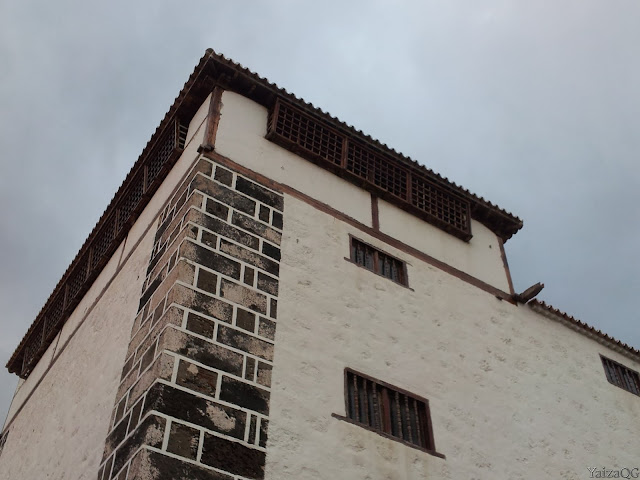(Es)
Tras la conquista de las #islascanarias (finalizando la conquista de todas las islas en 1496 por la corona de Castilla y en nombre del cristianismo) uno de los elementos característicos de la misma, a parte de las iglesias, fueron los conventos.
El primer convento en las islas fue el de Betancuria en 1416, en #Fuerteventura,establecido por los franciscanos y llegando a tener 19 conventos entre todas. (Acuérdense que las islas fueron conquistadas por partes y las primeras fueron Lanzarote y Fuerteventura, de ahí que estas islas ya fueran colonizadas, cuando todavía las otras no habían sido conquistadas).
El clero en las islas fue abundante, que viene atestiguada por la cantidad de conventos, no solo los 19 de la orden franciscana, sino por las demás órdenes que también se encontraban en las principales ciudades y villas de las islas: #LaLaguna, #LasPalmas, #LaOrotava, #Telde, #Garachico, #SantaCruzdeLaPalma o #Teguise.
Actualmente encontramos 5 conventos de todas Canarias que todavía están habitados, y todos en #Tenerife:
-Real Convento de Nuestra Señora de la Candelaria, en #Candelaria: Los Frailes son los encargados de la imagen y de la basílica de la Virgen.
-Convento de Santa Catalina de Siena en #LaLaguna: En su interior se conserva el cuerpo incorrupto de "La Siervita". El convento está custodiado por monjas de clausura de la Orden de Predicadores (Dominicas).
-Monasterio de la Inmaculada Concepción en #Garachico: Monasterio de clausura perteneciente a la Orden de la Inmaculada Concepción.
-Convento de Santa Clara de Asís en La Laguna: Originalmente fue fundado con el nombre de San Juan Bautista en el año 1547 y fue el primer convento femenino que hubo en Canarias.
-Santuario del Santo Hermano Pedro en #Vilaflor: Convento Betlemita y construido en donde nació su fundador. La Orden de los Hermanos de Belén (o Bethlem), es una orden religiosa católica, clerical, de vida apostólica y de derecho pontificio, fundada en 1656 en Guatemala por el misionero español Pedro de San José, el Hermano Pedro.
(En)
After the conquest of the #CanaryIslands, finishing the conquest of all the islands in 1496 by the crown of Castile and in the name of Christianity, one of the characteristic elements of it, apart from the churches, were the convents.
The first convent on the islands was that one of Betancuria in 1416 in Fuerteventura by the Franciscans who settled on all the islands, reaching 19 convents among all. (Remember that the islands were conquered by parts and the first were Lanzarote and Fuerteventura, hence these islands were already colonized, when still the others had not been conquered).
The clergy in the islands was abundant, which comes attested by the number of convents, not only the 19 of the Franciscan order, but by those of the other orders that were also found in the main towns and villages of the islands: La Laguna, Las Palmas, La Orotava, Telde, Garachico, Santa Cruz de La Palma or Teguise.
Currently we find 5 convents of all Canaries that are still inhabited, and all in Tenerife:
-Real Convento de Nuestra Señora de la Candelaria: The Friars are in charge of the image and the basilica of the Virgin.
-Convent of Santa Catalina de Siena in San Cristóbal de La Laguna: inside it is preserved the incorrupt body of "La Siervita". The convent is guarded by cloistered nuns of the Order of Preachers (Dominicas)
-Monasterio de la Inmaculada Concepción in Garachico: It is a cloistered monastery belonging to the Order of the Immaculate Conception.
-Convent of Santa Clara de Asís in San Cristóbal de La Laguna: It was originally founded with the name of San Juan Bautista in 1547 and was the first female convent in the Canary Islands.
-Sanctuary of the Holy Brother Pedro in Vilaflor: Betlemite convents and built where its founder was born. The Order of the Brothers of Bethlehem (or Bethlem), is a Catholic religious order, clerical, of apostolic life and of pontifical right, founded in 1656 in Guatemala by the Spanish missionary Pedro de San José, el Hermano Pedro.





No hay comentarios:
Publicar un comentario